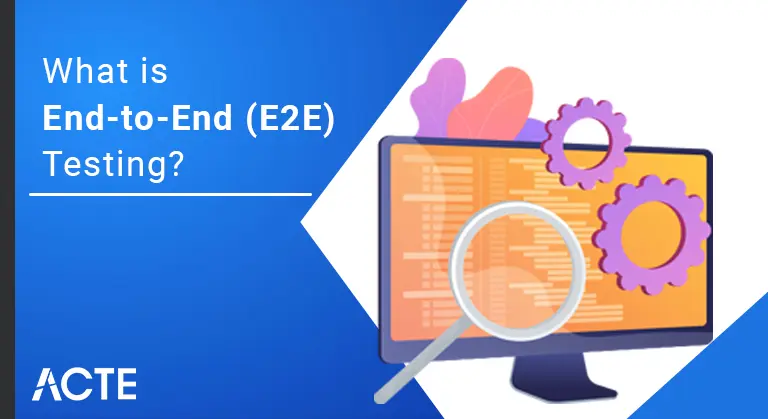
End to end testing (E2E testing) refers to a software testing method that involves testing an application’s workflow from beginning to end. This method basically aims to replicate real user scenarios so that the system can be validated for integration and data integrity.
- What is End to End Testing?
- Steps for End to End Testing
- End to End Testing Example
- E2E Testing must include the following three categories of activity
- Relevant factors to measure End to End Testing
- Main Challenges in End to End Testing
- Why is End to End Testing necessary?
- Best Practises for End to End Testing
- Benefits of End-to-End Testing
- When to Apply End-to-End Testing
- Metrics for end-to-end testing
- Conclusion
What is End to End Testing?
End to end testing (E2E testing) refers to a software testing methodology that involves testing the workflow of an application from beginning to end. This method basically aims to replicate real user scenarios so that the system can be validated for integration and data integrity.
Essentially, testing goes through every operation that the application can perform to test how the application communicates with hardware, network connectivity, external dependencies, databases, and other applications. Usually, E2E testing is executed after the functional and system testing is completed.
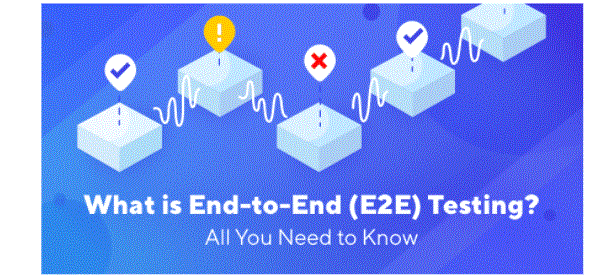
- Analyse requirements. Have a clear idea of how the app should work in every aspect.
- Set up a test environment in alignment with all requirements.
- Analyse software and hardware requirements.
- List below how each system needs to respond.
- List the test methods needed to test these reactions. Include a clear description of the standards (language, equipment, etc.) to be followed in each test. design test cases.
- Run tests, study and save results.
Steps for End to End Testing:
The steps below are required to initiate and complete any E2E test.
- linkedin facebook twitter whatsapp
- Table of Contents
- What is end to end testing?
- Steps for End to End Testing
- end to end testing example
- E2E testing should include the following three categories of activity:
- Relevant Factors to Measure End to End Testing
- Why is end to end testing necessary?
- Best practises for end to end testing
- Analyse requirements. Have a clear idea of how the app should work in every aspect.
- Set up a test environment in alignment with all requirements.
- Analyse software and hardware requirements.
- List below how each system needs to respond.
- List the test methods needed to test these reactions. Include a clear description of the standards (language, equipment, etc.) to be followed in each test. design test cases
- Run tests, study and save results.
- Good Practises: How to Write a Good Test Case Easily.
- Type the URL in the address bar to launch the Gmail login page.
- Log in to the account with valid credentials.
- Access Inbox. Open read and unread emails.
- Compose a new email.
- Reply to and forward an existing email.
- Open the Sent Items folder. Check email there.
- Open the Spam folder. Check email there.
- Log out of Gmail by clicking ‘Logout’.
End to End Testing Example:
End to End Testing: A Detailed Guide
What is end to end testing?
End to end testing (E2E testing) refers to a software testing methodology that involves testing the workflow of an application from beginning to end. This method basically aims to replicate real user scenarios so that the system can be validated for integration and data integrity.
Essentially, testing goes through every operation that the application can perform to test how the application communicates with hardware, network connectivity, external dependencies, databases, and other applications. Usually, E2E testing is executed after the functional and system testing is completed.
Steps for End to End Testing
The steps below are required to initiate and complete any E2E test.
End to Rnd testing example:
Let’s say the testers need to verify the functioning of the Gmail account. The following features are to be tested:
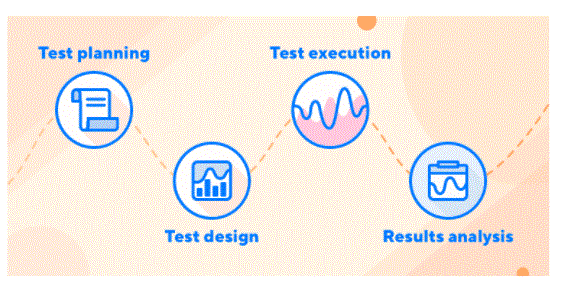
- To create a user function, do the following:
- List the features of the software and its interconnected subsystems.
- For each function, track and record all the work done. Do the same for all input and output data.
- Identify all relationships between user actions.
- Establish whether each user function is independent or reusable.
- To create conditions based on user actions, do the following:
- Decide a set of conditions for each user function. This can include time, state of the data, etc – essentially any factor that can affect a user’s actions.
- To create a test case for E2E testing, keep the following in mind:
- Create multiple test cases to test each functionality of user functions.
- Assign at least one single, separate test case to each situation.
E2E Testing must include the following three categories of activity:
1. User Tasks
2. Terms
3. Test Cases
Relevant factors to measure End to End Testing:
To track the progress of end to end test consider the following factors:
Test Case Preparation: Are the right test cases being built to test every feature of the software? The graph representing this should show the rate at which current versus planned test cases are being produced.
Weekly Test: Percentage basis report of test completion every week is essential. The important parameters here are currently executed, not executed, and failed test cases.
Defect Description: The percentage of defects identified, closed or opened each week is significant. By distributing defects (to solutions) on a priority basis, it helps testers and managers to keep track of bugs and monitor their resolution.
Test Environment Availability: It provides comparison of the time that is scheduled for testing every day and compares the time actually spent.
Main Challenges in End to End Testing:
Naturally, detecting bugs in a complex workflow poses challenges. The two heads are explained below:
Creating a workflow: To test the workflow of an app, the test cases in the E2E test suite need to be run in a specific order. This sequence should match the path of the end-user as they navigate through the app. Creating test suites to match this workflow can be taxing, especially since they usually involve building and running thousands of tests.
Access to test environment: It is quite easy to test apps in dev environments. However, each application has to be tested in a client or production environment. Chances are that environments are not always available for testing. Even when they are, testers have to install local agents and log into virtual machines. Testers also have to prepare for and prevent issues such as system updates that can disrupt test execution.
Why is End to End Testing necessary?
Each application is connected and integrated with multiple systems and databases outside its own environment. Needless to say, this complicates the workflow of the app quite a bit.
E2E testing determines whether the various dependencies of an application are working correctly. It also checks whether accurate information is being communicated between multiple system components.
Backend: E2E testing verifies the database and backend layers of an app. This is necessary because the core functionality of the app depends on the backend capabilities.
Multi-Tier System: If an application has a complex architecture whose workflow works through multiple tiers, E2E testing is essential to verify the overall functions as well as interactions between the different tiers in the architecture.
Distributed Environment: If an application is based on SOA (Service-Oriented Architecture) or cloud environment, E2E testing is essential. It is also essential for apps that contain multiple components that need to work together for successful operation.
Consistent User Experience: Since E2E testing involves a frontend, it also ensures that the app delivers a user experience that works across multiple devices, platforms, and environments. Cross browser compatibility testing, for example, is an important part of E2E testing in this regard.
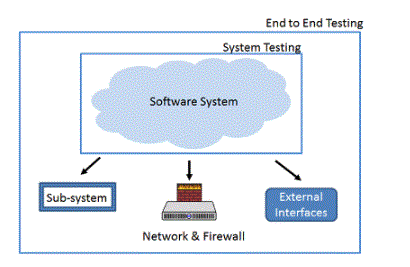
Best Practises for End to End Testing:
In order to conduct end-to-end testing, it is important to follow the practises outlined below – aimed at ensuring smooth testing and viable cost management.
Prioritise end use: When creating test cases, test like a user. Get into the mindset of someone using the app for the first time. Is it easy to find all the options? Are the features clearly marked? Can users get what they want in two or three steps? Use acceptance test documents and user stories that help clarify the user’s point of view. Design test cases accordingly.
Try to Avoid Exception Testing: E2E testing is best used to test common user scenarios. When it comes to exceptional user scenarios, use integration testing, or low-level unit testing.
Maintain order: Since E2E testing covers the entire application, test cases are bound to be complex. Every system component has to be tested, which increases the points of failure and also makes each anomaly difficult to debug. Structure and organisation are important in E2E testing. Initially conduct unit tests and integration tests to resolve first level errors.
Optimise setup and teardown mechanisms: Make sure the test environment is ready to start testing at any moment. Setup procedures should be as minimal as possible. Once testing is complete, it should take as little time as erasing test data so that the environment is returned to a pristine state – thus ready to test again.
- Expand test coverage
- Ensure correctness of application
- reduce time to market
- reduce cost
- find bug
- system flow validation
- Increase in test coverage areas
- Detecting subsystem issues
- Developers benefit from this because most of the tests are offloaded to others.
- Testers find it useful because writing tests that verify real-world behaviour helps them avoid problems and gain a greater sense of achievement.
- Managers like it because user simulation tests tell them how a failed test will affect the user.
Benefits of End-to-End Testing:
End-to-end testing is more reliable and widely adopted due to the following advantages:
Modern software systems allow subsystem interactions through advances in technology. Whether the subsystem is identical or different from the main system, within or outside the organisation, subsystem failure can cause adverse effects throughout the system.
System risks can be avoided by doing the following:
E2E testing broadly appeals to several groups:
When to Apply End-to-End Testing:
There are many scenarios for implementing end-to-end testing. Here’s an example:
Before testing, designers and developers create a list of which UI, functions, or features need to be performed. The data flow between systems must be tracked to find dependencies, flaws and inaccuracies. Teams also have to prepare conditions before testing – factors that can change any interface choice.
E2E testing is regularly conducted on finished products and systems, making each review a test of the complete system. If the system does not give the expected output or a problem is found, another test will take place. In this case, the team must record and analyze the data to determine the origin of the problem; Then fix them and test again.
Metrics for end-to-end testing:
Some of the many metrics used for E2E testing are:
Test Case Preparation Status: Used to determine the specific status of test cases under preparation in comparison to the planned test cases.
Testing Progress Tracking: Testing progress should be tracked on a weekly basis. This phase will provide regular details of test completion percentage, such as Passed/Failed, Executed/Executed, Valid/Invalid Test Cases, and so on.
Defect Status and Details: It gives weekly percentage of open and closed defects. Also, weekly fault distributions are based on severity and priority.
Environmental Availability: The actual number of operating hours and hours set per day for testing.
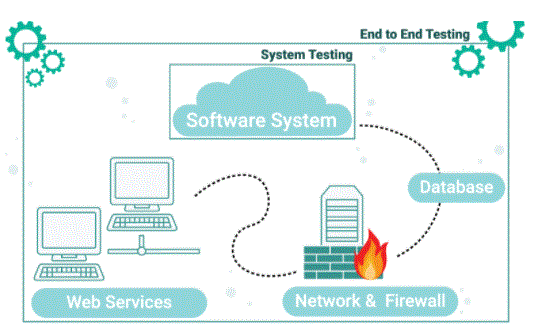
Conclusion:
End-to-end testing is a technique that tests the entire software product from start to finish to ensure that the application flow behaves as expected. It defines the system dependencies of the product and ensures that all integrated pieces work together as expected.
The main objective of end-to-end (E2E) testing is to test from the end user experience by simulating a real user scenario and validating the system under test and its components for integration and data integrity.
Software systems nowadays are complex and are linked with many subsystems. If one subsystem fails, the entire software system may crash. This is a huge risk and can be avoided by end-to-end testing.





